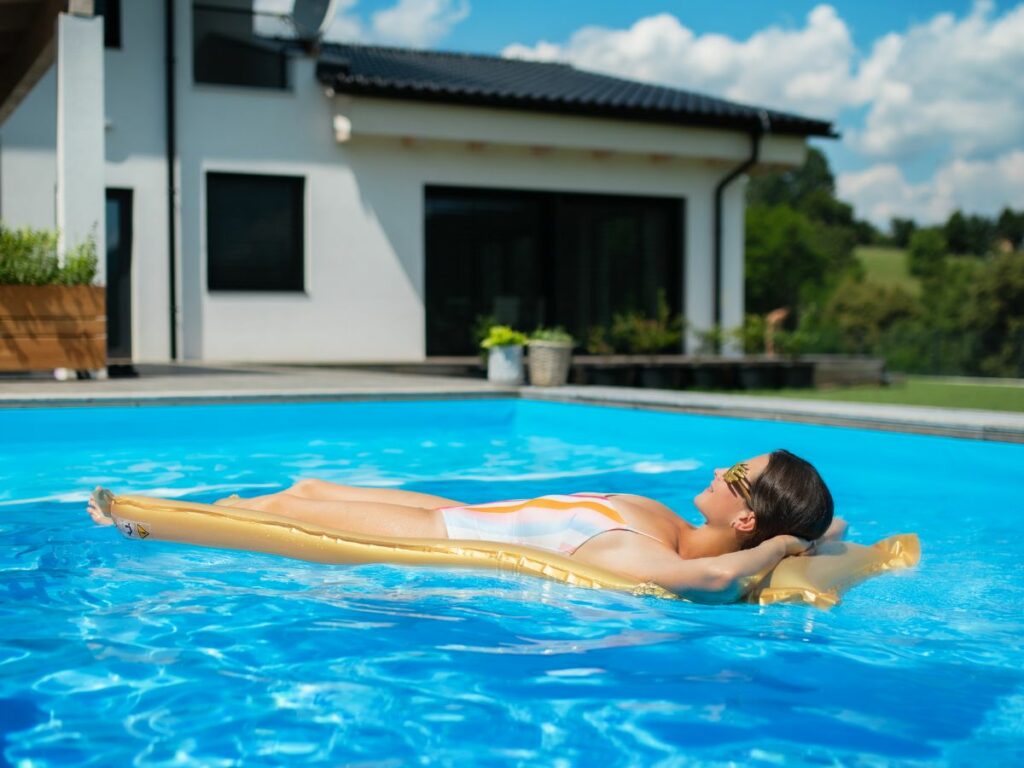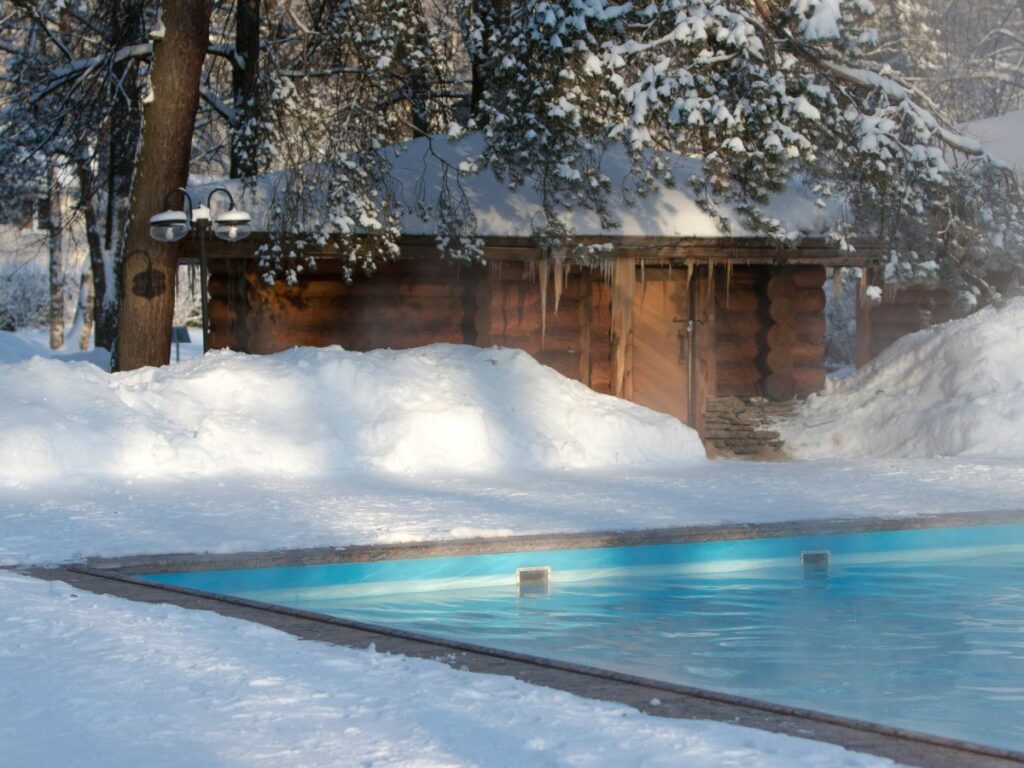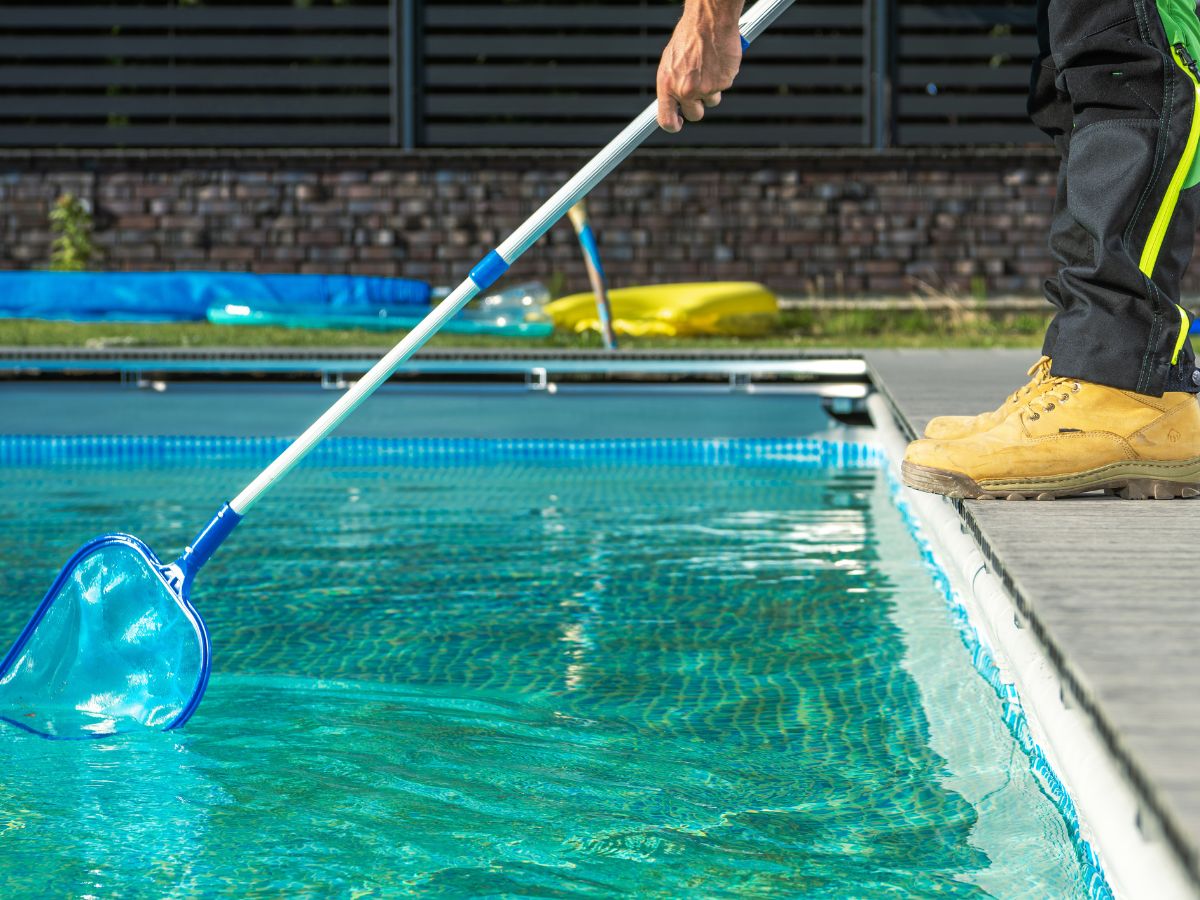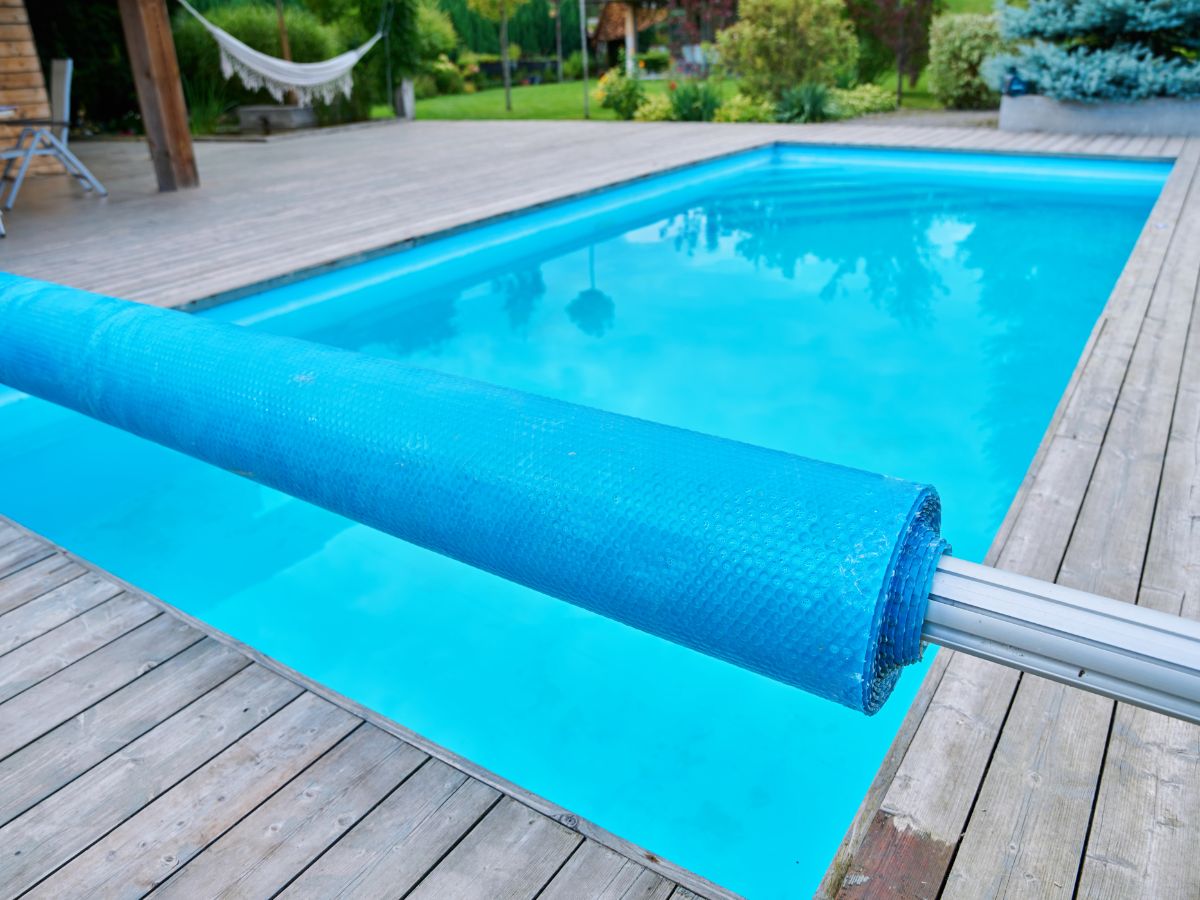Closing a Pool for Winter: 6 Tips on How to Winterize
As a participant in the Amazon Services LLC Associates Program and other affiliate programs, Easy Homemade Life may collect a share of sales or other compensation from the links on this page. This comes at no additional cost to you, and all the prices and availability are accurate at the time of publishing.
Closing a pool in winter requires thoughtful preparations to ensure your swimming oasis survives the colder months unscathed. Once the temperature begins to drop, you might start to wonder what to do with your pool in winter.

Getting the pool ready for winter might not be as fun as stocking the bar for winter cocktails, hanging up winter wreaths, and setting winter centerpieces, but it’s even more important, just like following energy-saving tips for the cooler seasons. Prepping the pool and outside plants like succulents for winter should be on your checklist.
You have to winterize your pool correctly to avoid long-term damage. Without proper preparations, you’ll risk potentially ruining your swimming pool. Follow this list of six steps to maintain and preserve your pool throughout the cold seasons.
6 Steps to Maintain Your Pool in Winter
Maintaining your pool may seem like a lot of hard work for pool owners, but in reality, it’s not that hard. As long as you take good care of your swimming pool throughout the cold winter months, you’ll rarely have to do anything major to maintain it for the summer.
Winterizing your pool is a good idea during the off-season, ensuring it remains in tip-top shape even in the face of cold weather. Let your summer be filled with the joy of tanning outside, hosting kids’ birthday parties and neighborhood potlucks, taco bar style, not the pain of regretting your laziness over pool care.

Step 1: Fix Any Technical Issues
Before preparing your pool for winter period hibernation, you must first ensure that there aren’t any underlying issues that need to be solved.
If you’ve noticed anything wrong with your pool filtration system or any other pool equipment, hire a professional to come and fix it before closing your pool. Otherwise, you’ll leave yourself an unpleasant surprise and possibly costly damage for next summer.
As an extra precautionary step, that same professional you hire should check up on your pool and ensure it’s in good shape and ready to be used next season.
Step 2: Drain Some of the Water
If you don’t want to drain the entire pool and waste so much water, you don’t need to. You’ll just need to drain the pool water level until it goes below the skimmers. Additionally, make sure your pool heater, filters, pump and other pool accessories are completely drained. If you leave any stagnant water in them over the winter season, they’ll be damaged when that water freezes, and replacing them would be rather expensive.
On the other hand, if you want to drain the entire pool, keep a shallow amount of water in the pool. This protects your pool’s structure from potential damage caused by freezing in cold temperatures when it’s not under proper care.
Step 3: Balance the Water’s pH and Chlorine Levels
Keeping an eye on your pool’s pH and chlorine levels throughout winter is probably easier than you think. Use a test kit to check the water once a week, or at least once a month, and make sure your pool’s chemistry is in the normal range. Don’t worry, it’s a simple enough process.
Aim for a pH level between 7.2-7.6, and chlorine level between 1-2 PPMs when using pool covers. By doing this, you’ll limit algae blooms and bacterial growth in your outdoor pool and keep the water chemistry well-balanced. Get this step right so you don’t need to worry about unwelcome surprises growing in the water. This makes pool maintenance during the colder months much less of a hassle.

Step 4: Keep Your Pool Clean
Regularly cleaning your pool doesn’t require fancy tools; a pool skimmer net and a pool brush will be your best friends. First, clean the pool skimmer reservoirs and pump lint baskets to remove leaves and dead insects. Roll up your sleeves and scrub the pool walls and floor every four to six weeks for a more thorough cleaning.
It takes a little effort and thoughtfulness, but the payoff is that you’ll prevent algae growth and preserve your pool’s filtration system. As an important part of winter pool maintenance, you’ll also want to inspect your filter system for grease or oil spots that could harden over the winter. Look for them now, because they’ll be a big pain to clean next summer.
Step 5: Remove Any Algae
Every week, inspect your pool for any signs of algae growth. Whenever you notice algae beginning to bloom in your swimming pool, remove it immediately before it becomes an infestation. The earlier you take care of it, the less of a problem it’ll be in the long run.
Invest in a good pool brush, and don’t miss checking the pool lines and the sides of the pool, especially if you have an above-ground pool.
Once the temperature rises above 60F in spring, add an algaecide to your pool’s water to help control algae growth as the weather gets warmer.

Step 6: Always Keep It Covered
Rolling out the swimming pool covers is a great way to preserve your pool throughout the cold winter months. Compared with a mesh cover, the winter pool cover will help keep leaves, bird droppings, and other organic material out of your pool. Consequently, you’ll have fewer bugs and algae growth because they won’t have anything to feed on, and you won’t have to clean your pool as frequently in winter.
Pool covers also lessen chemical evaporation, so you won’t have to adjust your pool’s chemical levels as often as before. You’ll be saving your time, effort, and money. So, invest in a high-quality swimming pool cover — if you don’t already have one — and learn how to cover a pool for winter so it fits perfectly.
In Conclusion
Save yourself the hassle of deep cleaning your pool and going through endless maintenance tasks to get it ready for summer again after a long winter hibernation. Proper pool maintenance during winter is the secret to a low-maintenance swimming pool all year round.
When you’re done, come back inside and relax with a cozy fall-flavored coffee, savoring the time before winter comes.
The more you commit to knocking off minor maintenance tasks and taking good care of your pool, the easier it will be to prepare it for summer. After following these six easy steps, your pool will remain preserved throughout the colder months, and you’ll have a clean pool waiting for you to hop in.
How to Winterize a Pool in 6 Easy Steps
Equipment
- 1 Pool brush
- 1 Solid pool cover
Instructions
- Fix any technical issues. Revise the pool filtration system and other equipment yourself, or hire professional help.
- Drain some water. Drain the water so it's at least below the simmers. Drain the heater, filters, and pump too.
- Balance the water's pH and chlorine levels.
- Keep the pool clean.
- Remove any algae. If you see any, remove it as quickly as possible to prevent overgrowth.
- Keep it covered. A high-quality pool cover is worth the investment as a guard against falling debris, animal droppings, and algae growth.









This was so helpful because I am a first time pool owner and living in an area with cold winters. I was overwhelmed at first, but now I have a much better sense of my pool set up.